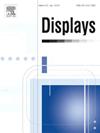Graph confidence intercalibration network for intracranial aneurysm lesion instance segmentation in DSA
IF 3.7
2区 工程技术
Q1 COMPUTER SCIENCE, HARDWARE & ARCHITECTURE
引用次数: 0
Abstract
Intracranial aneurysm (IA) lesion segmentation is significant for its treatment and prognosis. Although exiting deep network-based instance methods have good IA lesion segmentation results based on digital subtraction angiography (DSA) images, they still face great challenges with instance confidence bias and imprecise boundary segmentation, which may negatively affect IA diagnosis. To tackle these problems, this paper proposes a novel graph confidence intercalibration network (GCINet) to automatically segment IA lesions from DSA images. To be specific, we design a graph confidence intercalibration (GCI) module to mitigate instance confidence bias by dynamically adjusting their confidence distributions. At the same time, we propose an edge space perception (ESP) module to correct ambiguous segmentation boundaries. Extensive experiments on a clinical IA-DSA and a publicly available LiTS dataset demonstrate that our GCINet outperforms state-of-the-art methods. Additionally, visual analysis and ablation studies are provided to verify the effectiveness of each module in GCINet.
求助全文
约1分钟内获得全文
求助全文
来源期刊

Displays
工程技术-工程:电子与电气
CiteScore
4.60
自引率
25.60%
发文量
138
审稿时长
92 days
期刊介绍:
Displays is the international journal covering the research and development of display technology, its effective presentation and perception of information, and applications and systems including display-human interface.
Technical papers on practical developments in Displays technology provide an effective channel to promote greater understanding and cross-fertilization across the diverse disciplines of the Displays community. Original research papers solving ergonomics issues at the display-human interface advance effective presentation of information. Tutorial papers covering fundamentals intended for display technologies and human factor engineers new to the field will also occasionally featured.
 求助内容:
求助内容: 应助结果提醒方式:
应助结果提醒方式:


